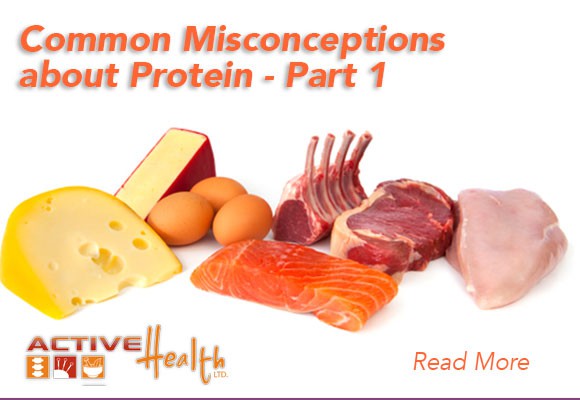Like fats and carbs, a lot of conflicting information is floating around about protein. Both high-protein and low-protein diets are recommended for weight loss, and vegetarians especially get different answers to the same question depending on who they ask. We recommend a high protein diet for our weight loss patients, our favorite is the Ideal Protein Plan. In this two-part article we’ll clear up some of the most common misconceptions surrounding protein.
Misconception # 1: You need a lot of protein, especially if you work out.
The idea that athletes need tons of protein has been around for a long time. And while the makers of protein shakes would like us to believe it, it’s simply not true. Most of us already get more protein than we need, and while athletes do need more protein than those of us who are sedentary, even they don’t need much more than a gram per pound of bodyweight. Protein in excess of .9 to 1.25 grams per pound simply breaks down into its component amino acids or is converted into carbs and stored.
Misconception # 2: Protein makes you fat
Just like fat, it isn’t protein itself that makes you gain weight, it’s the amount of calories you take in. Protein and carbs have the same amount of calories per gram, but 30 grams of steak is a much smaller portion than 30 grams of bread, or rice, or green beans so it’s easier to eat more calories of protein without realizing it. That’s why we recommend eating more protein for weight loss.
Misconception # 3: You need to eat incomplete (plant) proteins together in the same meal to make complete proteins
While it’s true that most plant proteins are incomplete proteins—that is, they are missing one or more essential amino acids—and you do need to eat complementary proteins to fill in the gap, research shows that it doesn’t have to be at the same meal. Simply eating different proteins throughout the day should be sufficient. For instance, beans and rice are both good sources of protein, but both are incomplete. Once we were told that in order to make a complete protein, we’d have to eat both in one sitting, as in a bean-and-rice burrito. Now we know that eating rice at breakfast and beans at lunch or dinner is equally good.
Protein Content in Typical Food Selections:
Beef
- Hamburger patty, 4 oz – 28 grams protein
- Steak, 6 oz – 42 grams
- Most cuts of beef – 7 grams of protein per ounce
Chicken
- Chicken breast, 3.5 oz – 30 grams protein
- Chicken thigh – 10 grams (for average size)
- Drumstick – 11 grams
- Wing – 6 grams
In part two, we’ll look at more, plus what proteins actually are and why we need them.
Our nutritionists at Active Health wanted to clear up some of the most common misconceptions about protein. If you would like to start a weight loss plan, call or schedule a consultation at https://activehlth.com.

